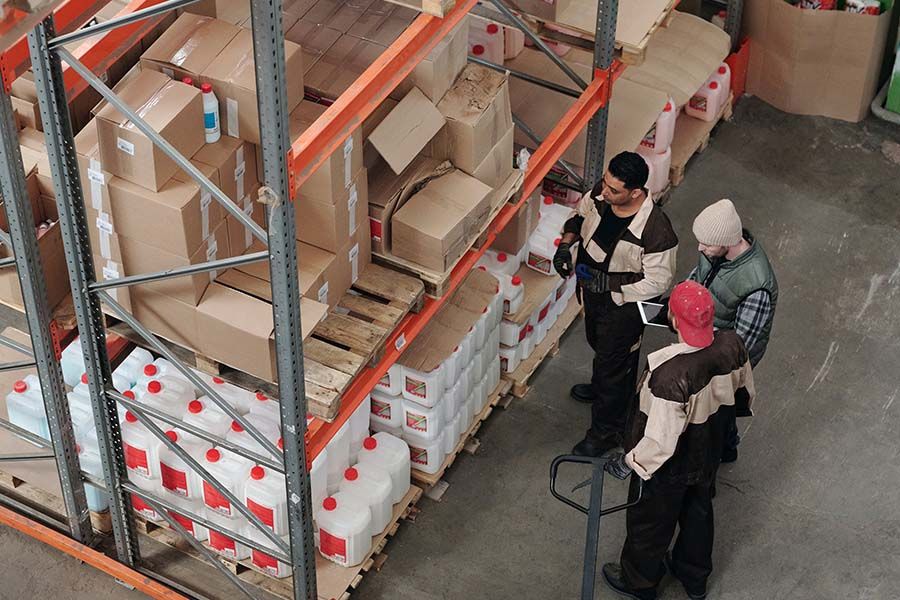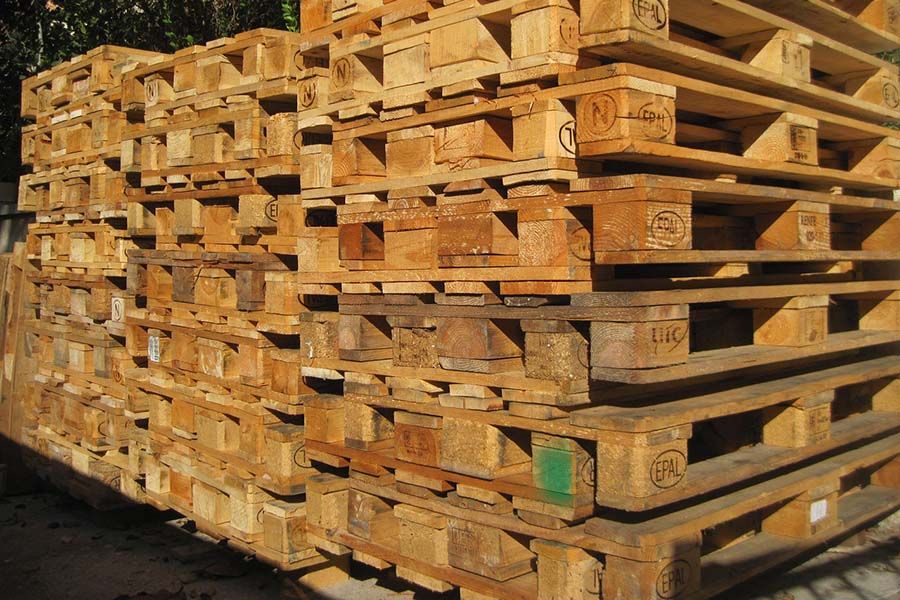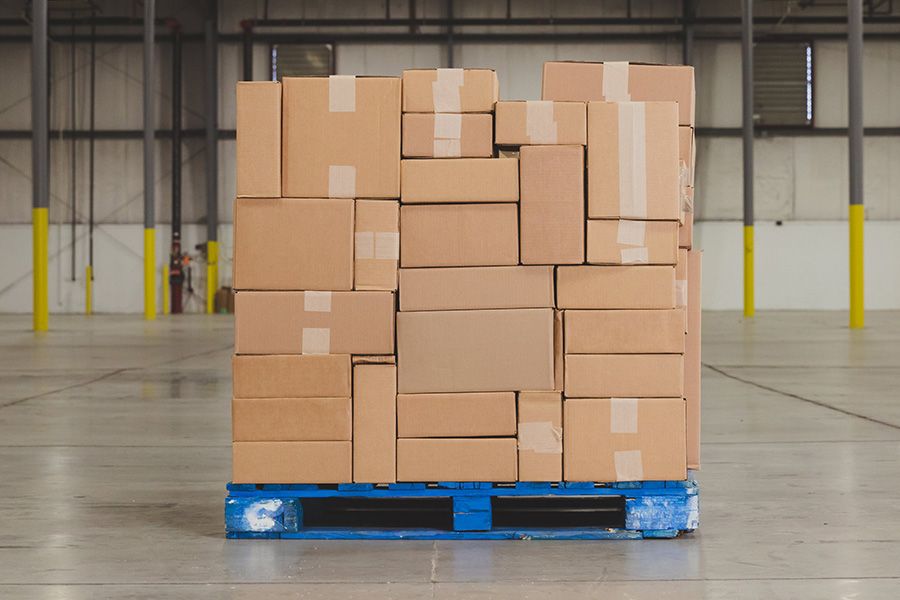The Environmental Benefits of Pallet Shipping

Absolutely, here are four key environmental benefits specifically tied to pallet shipping:
1. Efficient Use of Space:
Pallets optimize space within shipping containers, trucks, and warehouses. They allow for better stacking and utilization of available area, reducing the number of shipments required to move goods. Here are five environmental benefits associated with the efficient use of space in pallet shipping:
1.1. Reduced Carbon Emissions:
Efficient pallet shipping optimizes space within transportation vehicles like trucks and ships. By maximizing the cargo capacity in each shipment, it reduces the number of trips required to transport goods. Fewer trips mean reduced fuel consumption and lower carbon emissions per unit of cargo transported.
1.2. Resource Conservation:
Maximizing space with pallet shipping minimizes the need for additional trucks or containers, conserving resources by efficiently utilizing existing transportation capacities. This reduces the demand for new vehicles or additional shipping resources, indirectly lessening the environmental impact associated with their production and operation.
1.3. Decreased Packaging Material Usage:
Pallets allow for better stacking and securing of goods, reducing the need for individual packaging or protection for each item. This optimization leads to a decrease in packaging material usage, lowering the environmental impact associated with the production and disposal of packaging materials.
1.4. Lower Energy Consumption:
Efficiently stacking and organizing goods with pallets minimize the need for energy-intensive handling processes. It streamlines loading and unloading, reducing the energy expended in transportation logistics and contributing to overall energy conservation.
1.5. Preservation of Natural Spaces:
By maximizing the use of available space within transportation vehicles, pallet shipping indirectly contributes to the preservation of natural spaces. Reduced transportation needs due to more efficient cargo loading help limit the expansion of transportation infrastructure into natural or undeveloped areas.
These points showcase how efficient space utilization in pallet shipping practices significantly reduces environmental impacts, including lowered emissions, resource conservation, and minimized disturbances to natural environments.

2. Reduced Packaging Waste:
Pallets often eliminate the need for excessive packaging materials. Goods can be secured directly onto the pallet, minimizing the use of cardboard, shrink wrap, and other packaging materials. Here are three specific environmental benefits tied to the reduction of packaging waste through pallet shipping:
2.1. Less Material Consumption:
Pallet shipping minimizes the need for excess packaging materials like cardboard, plastic wraps, and other disposable packaging. This reduction in material usage directly lessens the environmental impact associated with manufacturing, transportation, and disposal of packaging materials.
2.2. Lower Environmental Footprint:
By streamlining packaging through pallet shipping, companies can significantly decrease the volume of waste generated in the transportation process. This not only reduces the amount of waste sent to landfills but also decreases the overall carbon footprint associated with waste management and disposal.
2.3. Resource Efficiency and Conservation:
Pallets enable goods to be stacked securely, reducing the necessity for individual packaging or protection for each item. This promotes resource efficiency by optimizing space and material usage, conserving resources that would otherwise be used in manufacturing excess packaging materials.
These factors emphasize how pallet shipping methods contribute to a tangible reduction in packaging waste, promoting resource efficiency and minimizing the environmental impact associated with packaging production and disposal.

3. Reusable and Recyclable:
Pallets are designed to be durable and reusable. When well-maintained, they can be used for multiple shipments, reducing the need for new pallets and decreasing waste. Additionally, when pallets reach the end of their life cycle, they can be recycled into new pallets or other wooden products. Here are four specific environmental benefits tied to the reusability and recyclability aspects of pallet shipping:
3.1. Reduction in Raw Material Consumption:
Pallets are designed for reuse, allowing them to be utilized multiple times before reaching the end of their lifecycle. This reduces the demand for new raw materials required to manufacture additional pallets, conserving resources.
3.2. Minimized Waste Generation:
The ability to reuse pallets reduces the quantity of discarded pallets, lowering the amount of waste sent to landfills. Additionally, when pallets do reach the end of their useful life, they can often be recycled into new pallets or other wood products, further reducing waste.
3.3. Lower Carbon Footprint:
The reusability of pallets decreases the need for continuous production of new pallets, which in turn reduces energy consumption and greenhouse gas emissions associated with manufacturing processes. Additionally, recycling pallets minimizes the environmental impact by diverting materials from landfills.
3.4. Promotion of Circular Economy Principles:
By being reusable and recyclable, pallets align with the principles of a circular economy where resources are kept in use for as long as possible. This promotes sustainable practices, reduces waste, and extends the lifespan of materials within the supply chain.
These factors emphasize how the reusability and recyclability of pallets contribute significantly to environmental conservation by reducing raw material consumption, minimizing waste, lowering emissions, and promoting circular economy principles within the logistics industry.
4. Improved Handling and Efficiency
Palletized shipments are easier to handle, load, and unload. This efficiency leads to faster turnaround times, reducing the time trucks or ships spend idling and consuming fuel. Here are three specific environmental benefits related to the improved handling and efficiency offered by pallet shipping:
4.1. Reduced Idle Time and Fuel Consumption:
Efficient handling and loading of palletized goods result in faster turnaround times for transportation vehicles. This reduces idle time, where trucks or ships would otherwise consume fuel while waiting to load or unload. The optimized efficiency lowers fuel consumption and associated emissions.
4.2. Streamlined Processes for Lower Emissions:
Pallet shipping’s streamlined handling processes minimize delays in loading and unloading. This efficiency decreases the time vehicles spend in operation, reducing overall emissions released into the environment during transportation.
4.3. Enhanced Logistics Efficiency:
Efficient palletized shipments result in smoother logistics operations. Optimized handling and loading procedures contribute to a more organized supply chain, reducing unnecessary trips, optimizing routes, and ultimately decreasing the environmental impact associated with the transportation of goods.
These points underline how improved handling and efficiency in pallet shipping operations lead to reduced fuel consumption, lower emissions, and an overall more environmentally friendly logistics process.
Implementing pallet shipping practices not only enhances efficiency within the supply chain but also contributes significantly to reducing the environmental impact of transporting goods, making it a valuable strategy for businesses aiming for sustainability.

